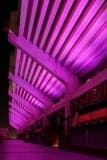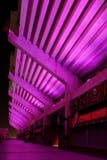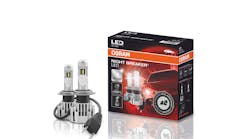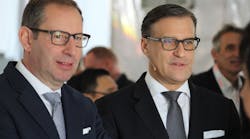From January 27 through game day, the stadium is being illuminated from dusk until dawn with Philips ColorReach Powercore LED floodlights, turning it into a dynamic focal point for Tampa residents and visiting fans.
Design firm Infinite Scale Design was responsible for designing and branding the overall look of the city of Tampa for Super Bowl XLIII. Working with lighting designer Dall Brown, they chose to accentuate the stadium's exterior crown with colorful, customizable lighting.
Approximately 70 ColorReach Powercore fixtures were used in total, with just two required to evenly illuminate each 40 by 80 foot bay. Mounted on a concrete cross beam from within the stadium, the fixtures project light onto the underside of the stadium's upper 30 rows.Each fixture is individually programmable and can produce millions of colors and color-changing effects, which enables the stadium to display the colors of the opposing teams as well as providing dazzling lighting effects.
Capable of projecting over 500 feet, the ColorReach Powercore fixtures make the stadium visible from the air and from multiple viewpoints across the city. The fixtures were supplied by LED Source and programmed and installed by local Tampa entertainment solutions provider, Bay Stage Lighting.
"The Super Bowl is considered by many to be the most important sporting event of the year, and we wanted to create a visually striking look for the city that matched the excitement of the event," said lighting designer Dall Brown.
Other Philips Color Kinetics installations in entertainment and sporting venues include Boston's TD Banknorth Garden and Bank of America Pavilion, Los Angeles' Hollywood Bowl, Milwaukee's Marcus Center for the Performing Arts and Sweden's Globen Arena.








